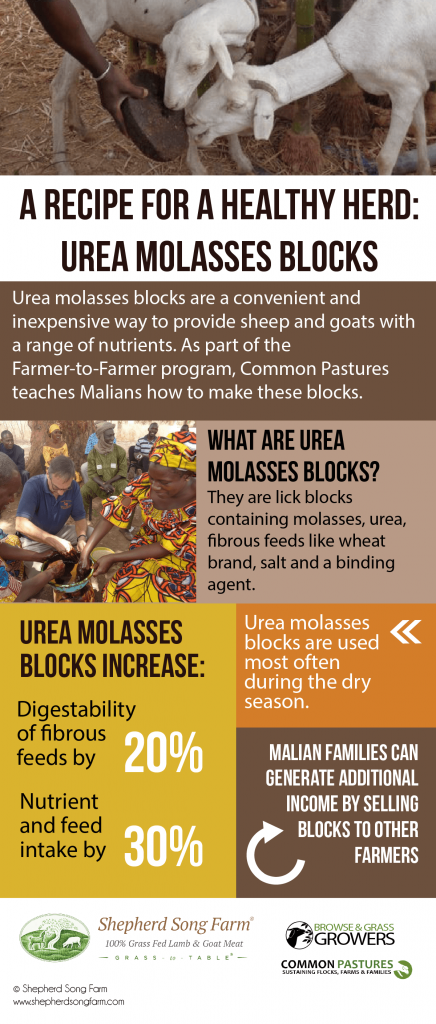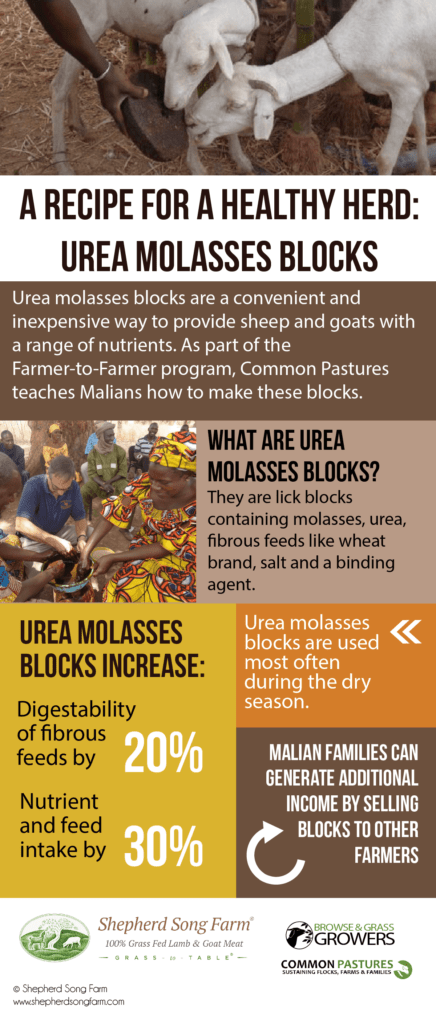
A Recipe for a Healthy Herd: Urea Molasses Blocks (Infographic)
Mar. 8 | 2017
Sheep and goat diets in Mali, Africa, are based on fibrous, low-nutrient feeds like mature pastures and crop residues, which are deficient in protein, minerals and vitamins and are poorly digested. In the dry season, they are at a higher risk of malnutrition. Undernourished small ruminants are more likely to face diseases, death and poor breeding.
Supplementation with urea molasses blocks offers a simple way to provide herds with valuable nutrients and can be a money-making opportunity for Malians. For these reasons, Common Pastures educates Malians on this practice as part of the Farmer-to-Farmer program.
Urea molasses blocks, also known as lick blocks, contain urea, molasses, fibrous feeds like wheat brand, salt and a binding agent. If molasses is not available, farmers can substitute a suitable replacement such as honey or a fruit syrup, such as from mangos when they are plentiful.
Supplementation with lick blocks can increase digestibility of fibrous feeds by up to 20%, and increase nutrient and feed intake by up to 30%. During the process vitamins, minerals, and protein can be added. This infographic describes the process to help educate the public about the importance of proper nutrition in sheep and goats in Mali, West Africa.


